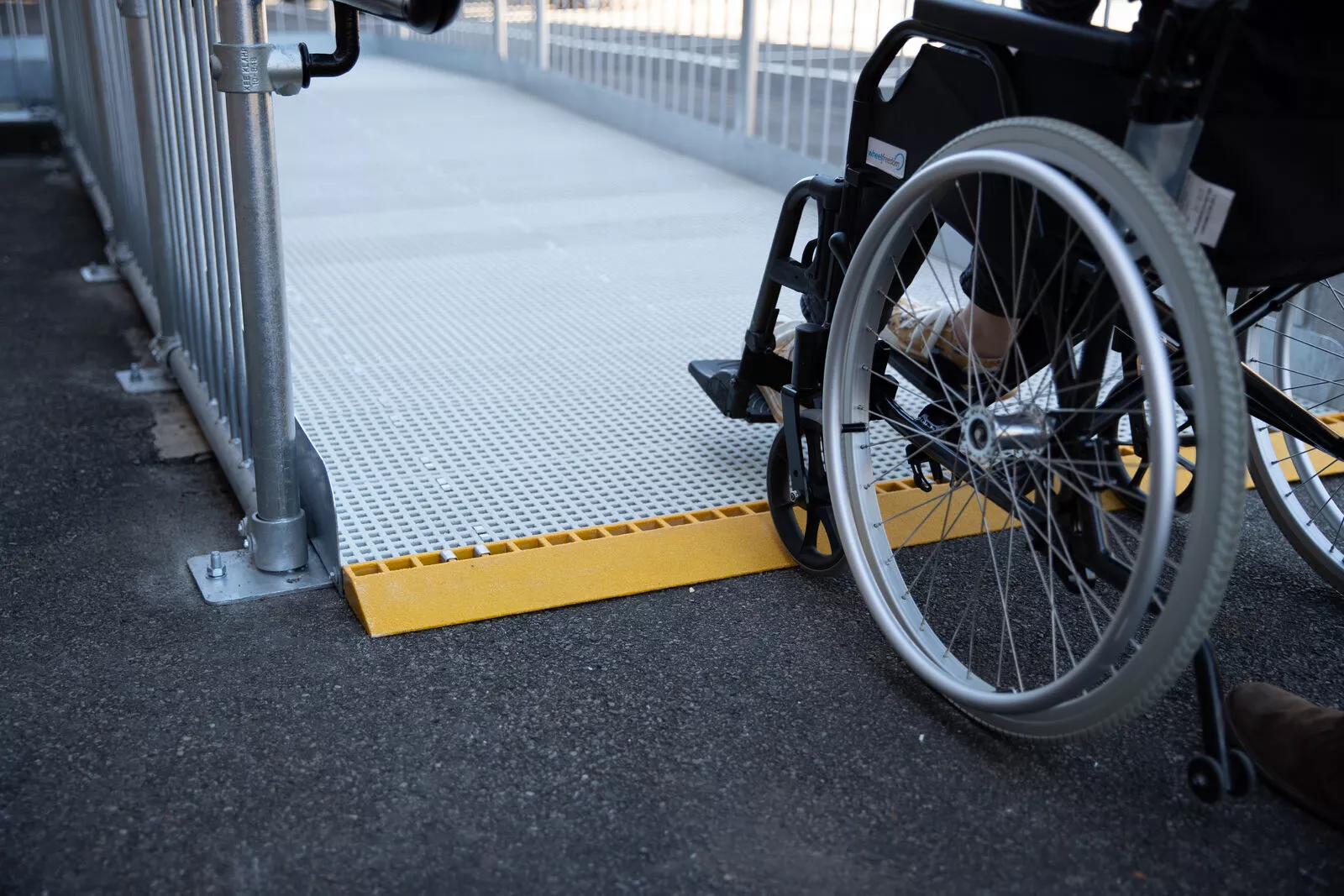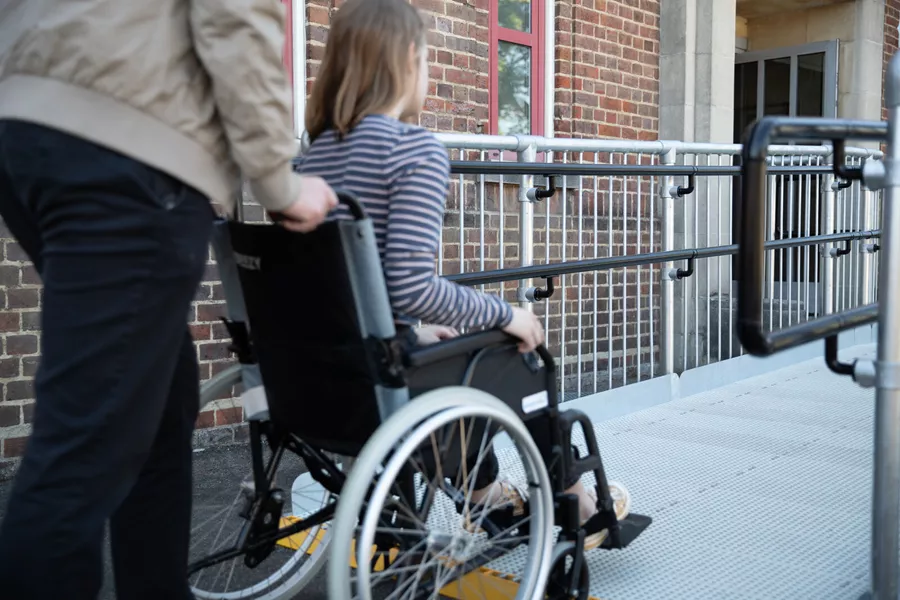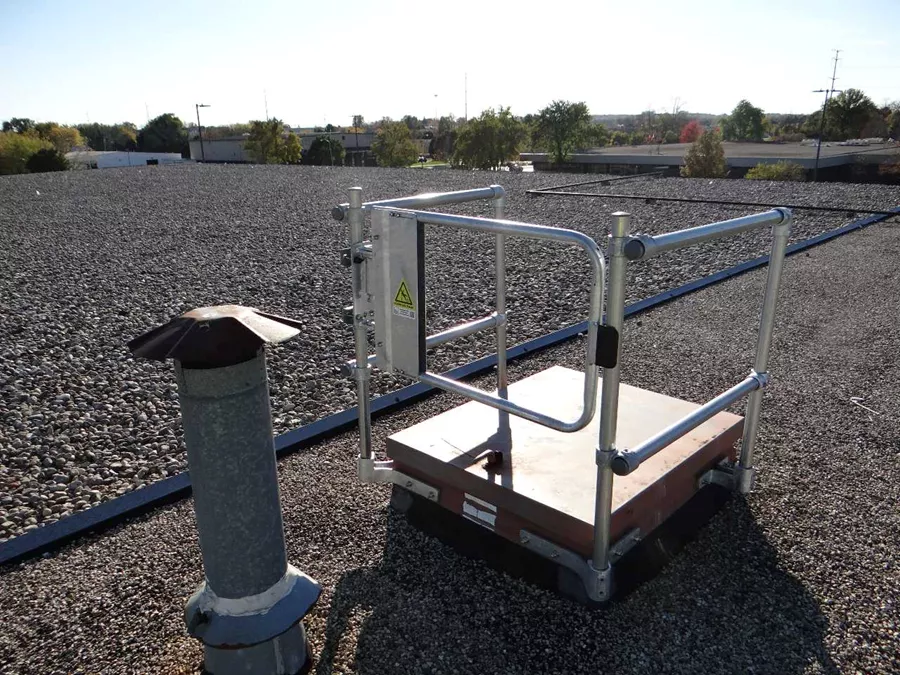
You are visiting the Canada Kee Safety website from United States. Would you like to go to the United States site?
Health and safety. Safety and health. The two terms go together like soup and sandwich or horse and carriage. At healthcare facilities, notably hospitals, clinics, and senior residences, essential safety procedures, such as infection control, contribute to good medical care. There is a physical plant aspect to safety, however, that helps ensure the safety of workers and visitors to healthcare facilities inside, outside, and up on the roof.

Wheelchair access is required for new construction, but older and renovated buildings often require a retrofit to enable people who use wheelchairs to traverse a step, threshold, or other obstacles. To this end, a modular wheelchair access ramp can be installed to make it easier for people in a wheelchair—or virtually any mobility issue—to enter and leave a facility.
For strength and durability, an access ramp comprised of corrosion-resistant metals (e.g., stainless steel, galvanized steel, aluminum components) with an anti-slip walkway that provides good surface drainage will hold up in all weather conditions. With adjustable load-bearing feet, smooth, pipe-fitted handrails, and other modular components, such an access ramp can be reconfigured or expanded.
Wheelchair access ramps include smooth, continuous handrails. Designed for ADA compliance, smooth handrails also belong on entrances with stairs and stairways and hallways throughout a healthcare facility. Railing components made from galvanized steel for corrosion resistance, the railing system can be powder coated and fitted with toe boards and infills for added safety and aesthetics.
ADA-compliant handrails are not required or necessary everywhere in a hospital where railings can be used, especially as safety barriers and for general fall protection. Loading docks and ancillary services areas (e.g., laundry, maintenance, kitchen) are examples of where traditional safety railings are effective and economical.
Component-fitted pipe railings built from galvanized steel provide strength and durability without the installation expense of welding. Like smooth handrails, they can be powder coated for visibility or design considerations. They can also be reconfigured to adapt to changing plant layouts.

It is not a place for patients and their visitors or for medical professionals. However, the rooftop is where physical plant workers perform maintenance and repair operations essential to the operation of a healthcare facility. For them, rooftop fall protection is part of critical care.
A roof hatch is a common way for safe egress and ingress from the roof. Yet, it is an opening in the roof and, therefore, a fall hazard. A roof hatch must be protected by a compliant roof hatch railing system that includes a self-closing safety gate.
The greatest danger when working on a roof is a fall over the roof edge. Workers can be protected with anchored “tie-off” harnesses and lanyards, but a perimeter safety railing system provides the best overall protection for a flat or low-sloped roof. It is a “collective” or passive form of fall protection, which means it is always in place to protect all workers collectively without any training, inspection, or other worker involvement.
A roof railing system compliant with Canada Occupational Health and Safety Regulations (SOR/86-304) should be installed. As with ground-based outdoor railings, roof railings with components such as hot-dipped, galvanized steel provide strength, durability, and corrosion resistance.
Safety during construction or maintenance tasks can be enhanced by warning lines in work zones that need immediate demarcation. Heavy-duty bases with corrosion-resistant uprights connected by vinyl-coated, stainless-steel cables with bright warning flags comprise strong, durable assemblies. Common on rooftops, warning lines are helpful on the ground floor or any other level.
How good is soup and a sandwich at a hospital cafeteria? It depends on the cafeteria, but you can still be assured that you are being served a meal prepared to rigorous health and safety standards.
For the medical and professional staff, patients, and visitors, other safety measures must be in place that meet different standards and regulations. Whether accessing the lobby, the loading dock, or a level roof, wheelchair access ramps, smooth handrails, safety railings, barriers, warning lines, and other fall protection systems help provide comprehensive safeguards at healthcare facilities.

What experts look for when performing a rooftop safety audit and how to improve worker safety with solutions that exceed OH&S compliance.